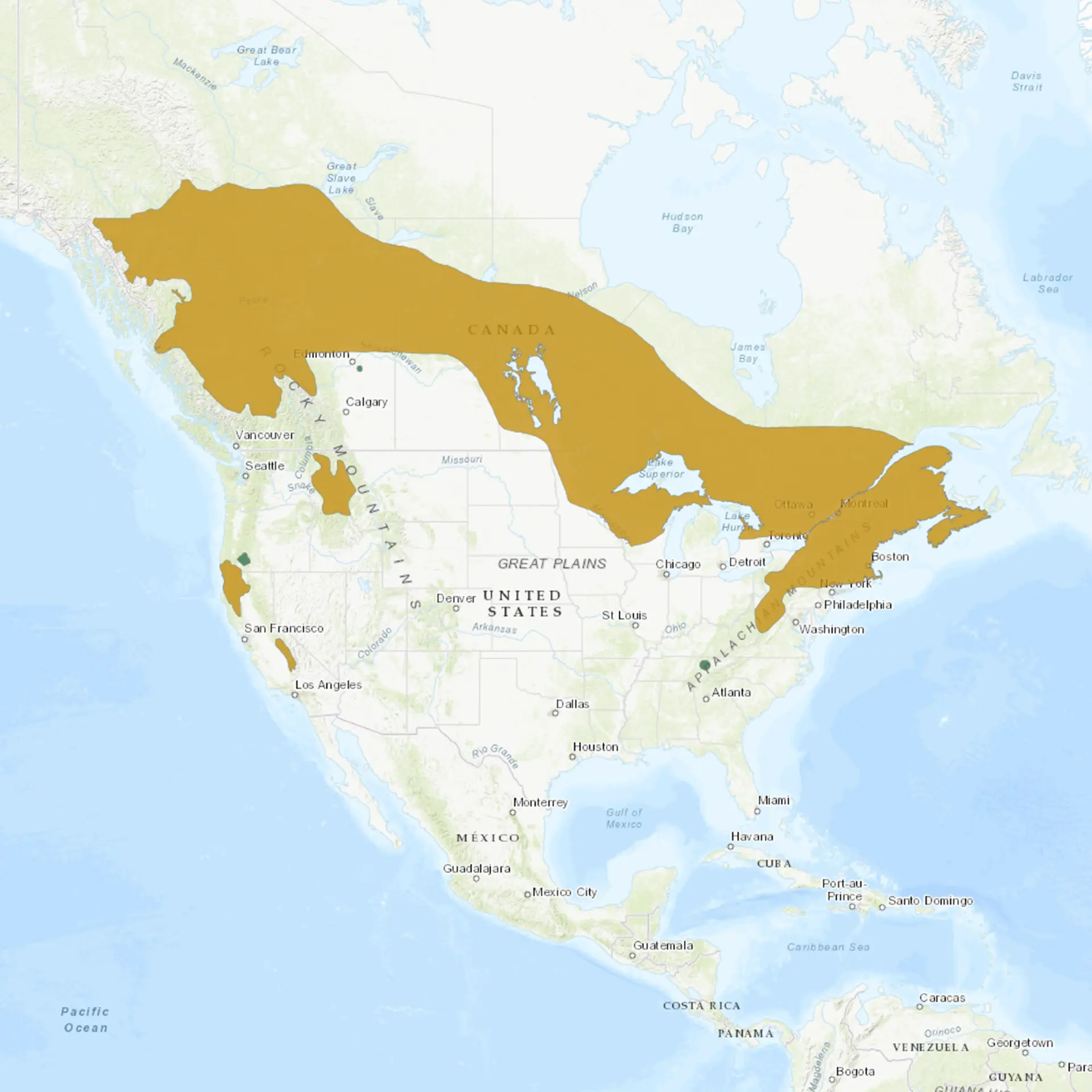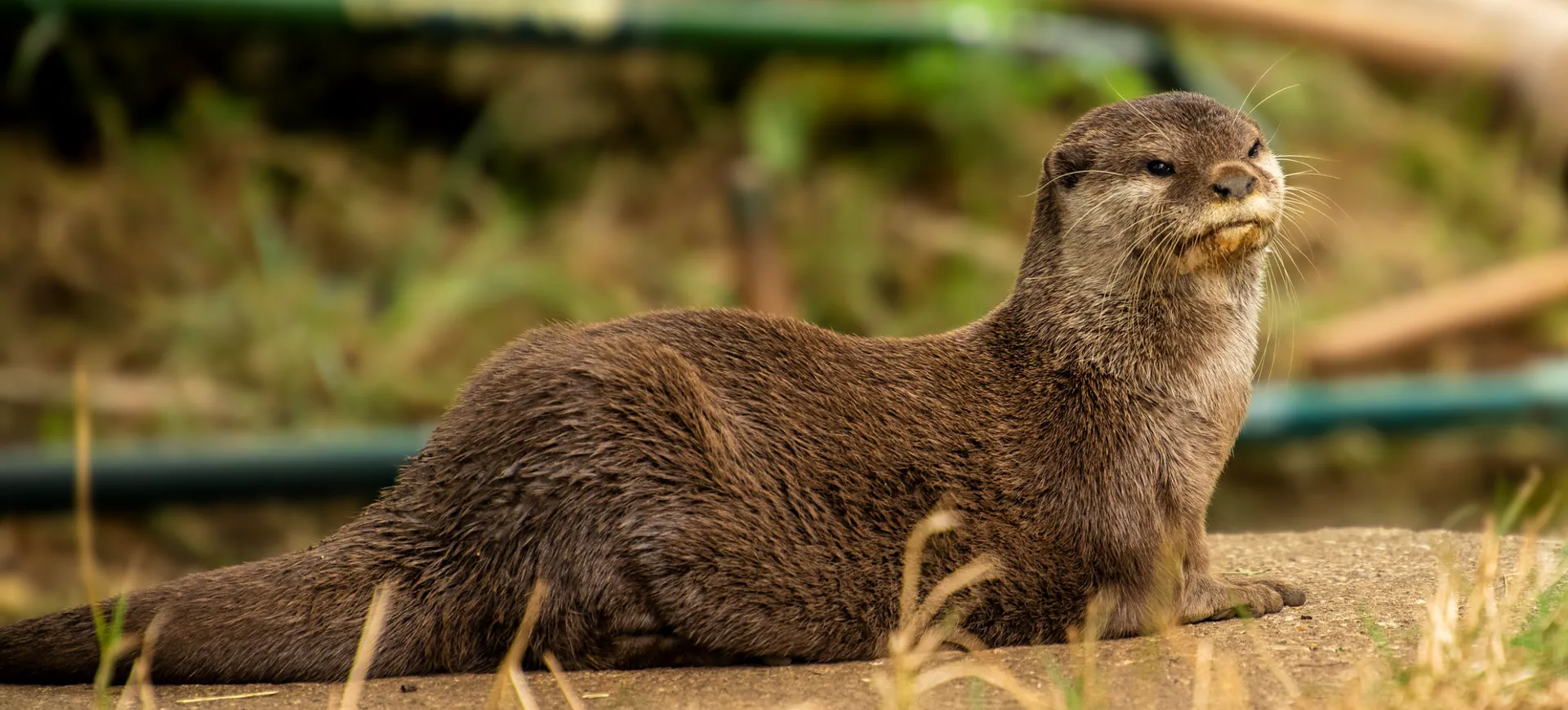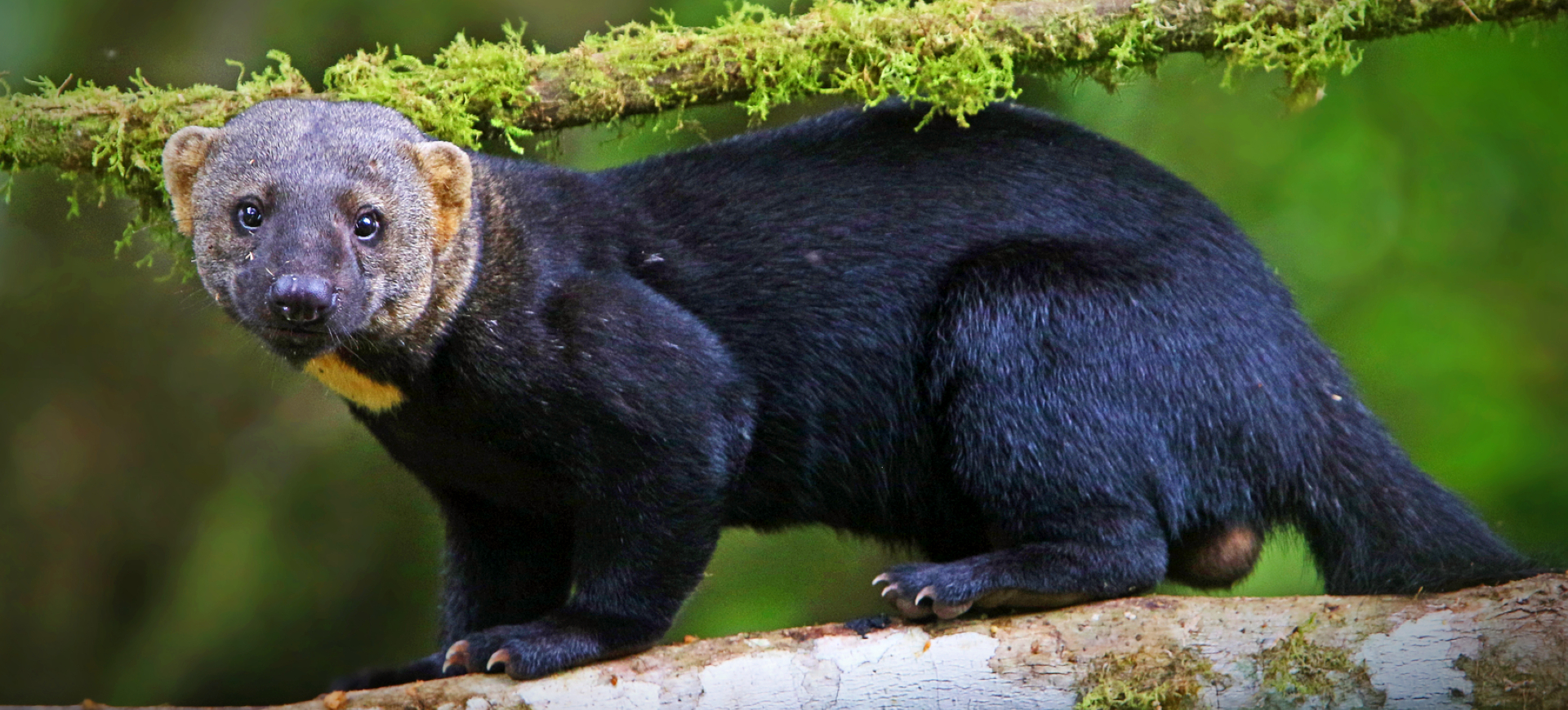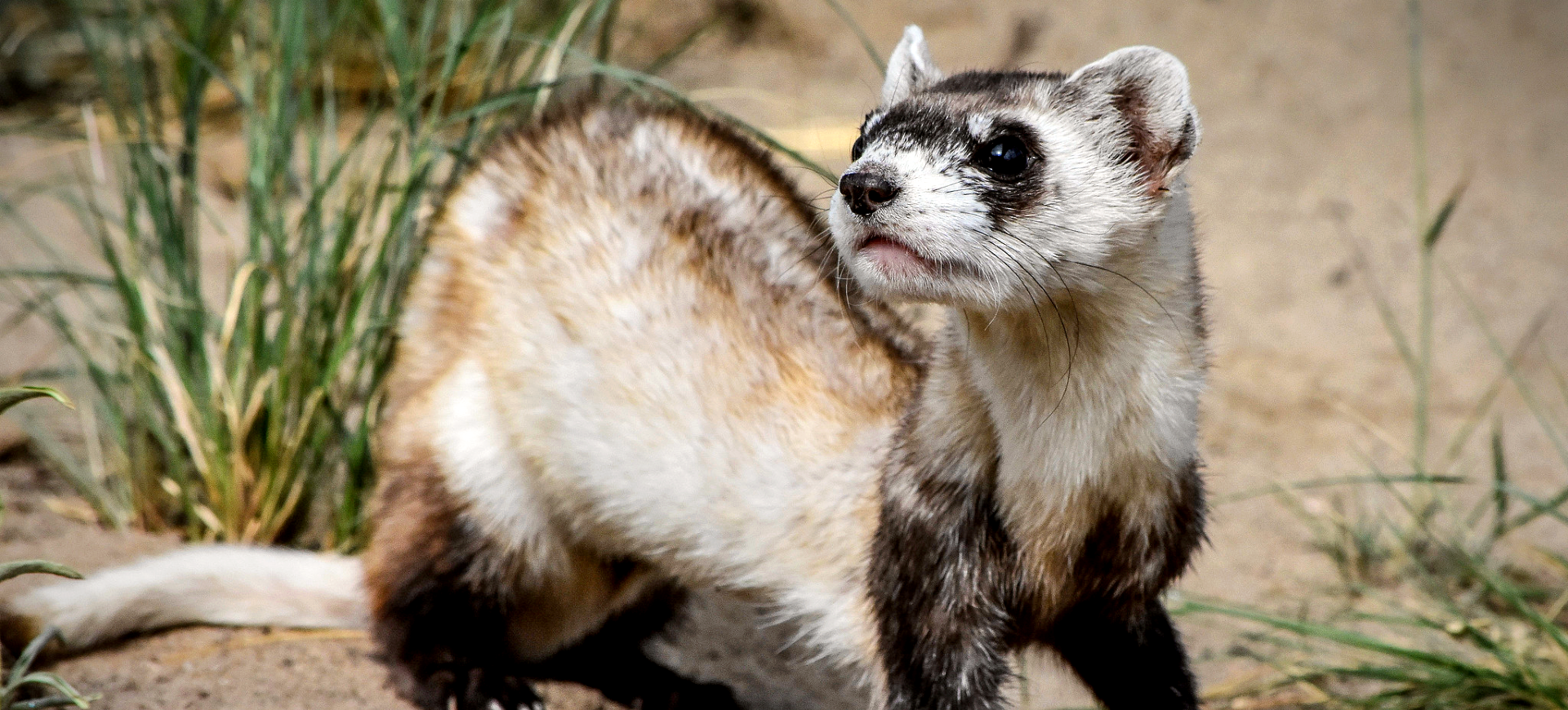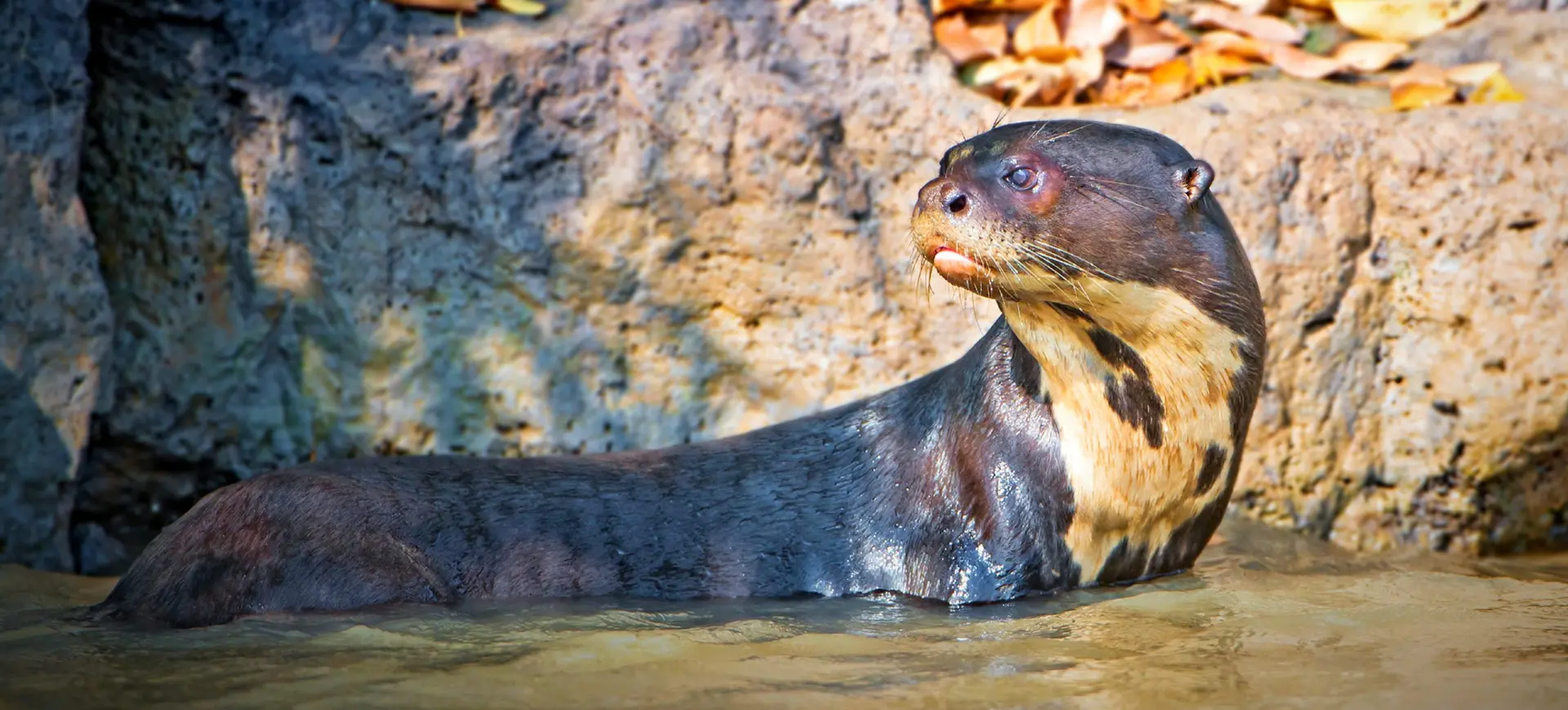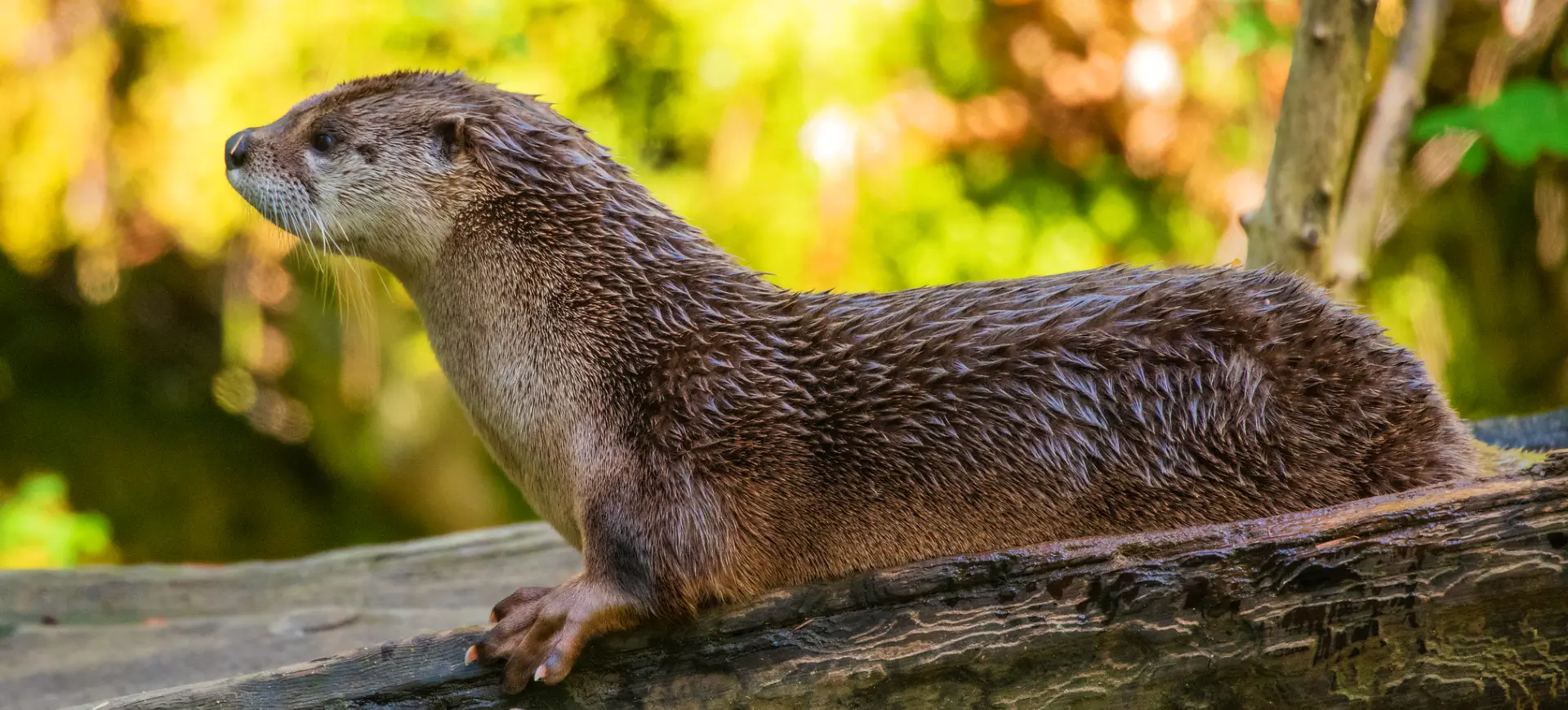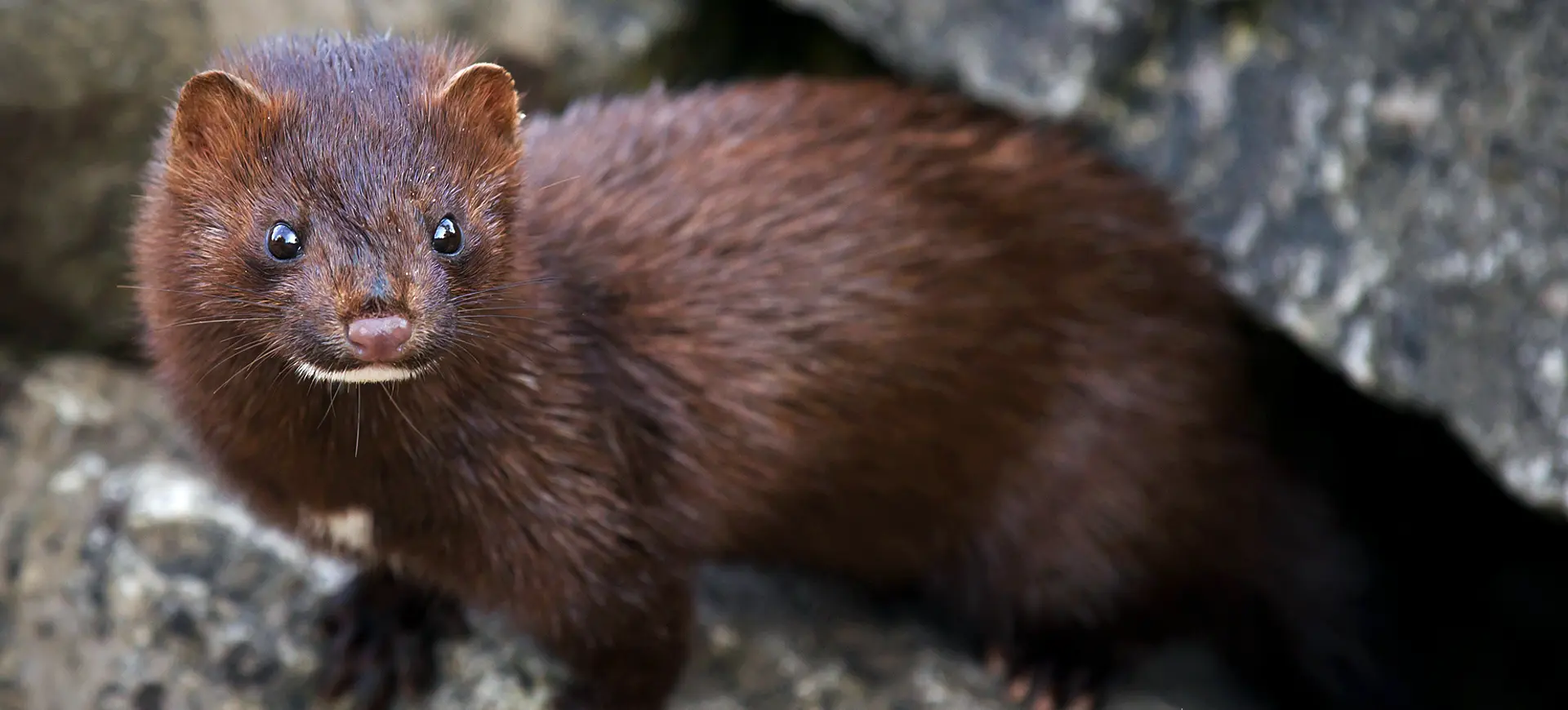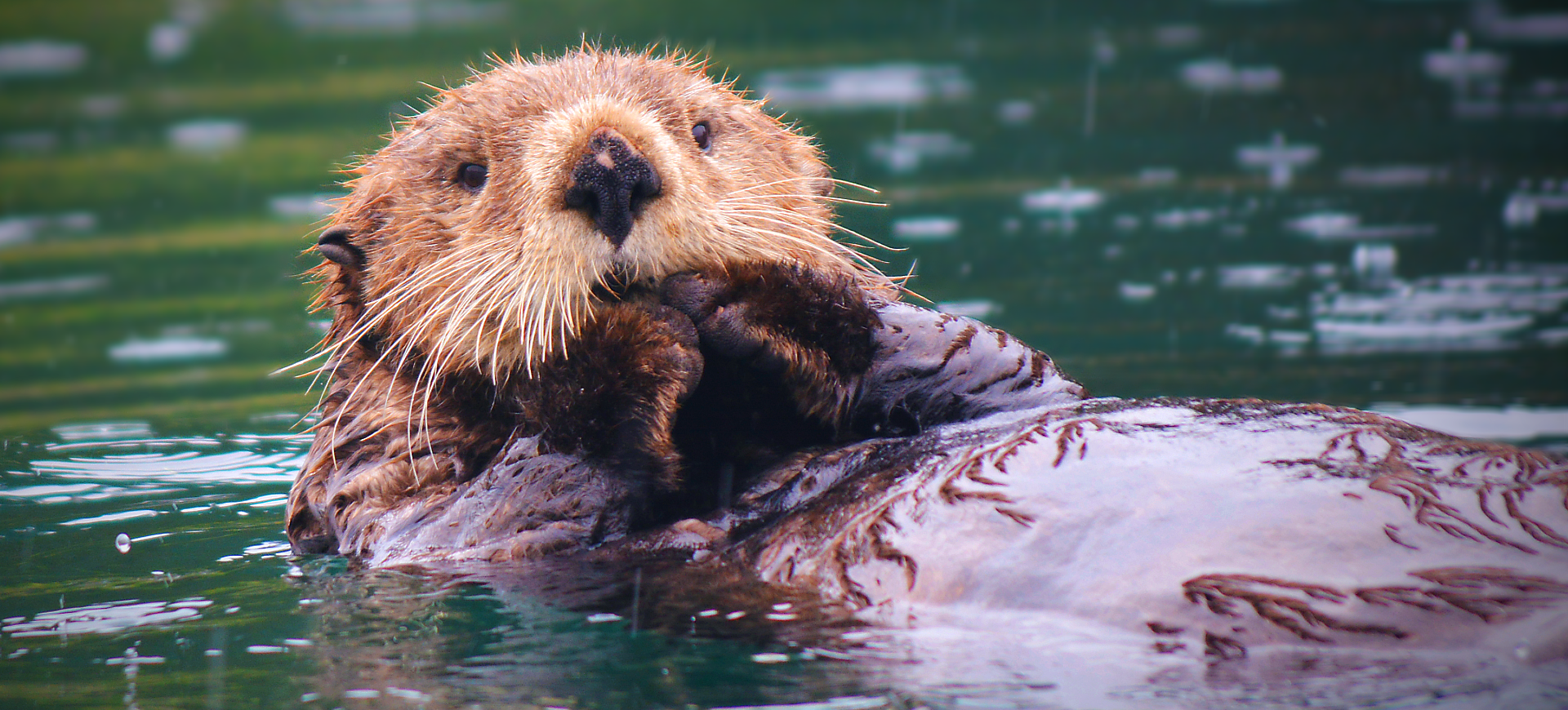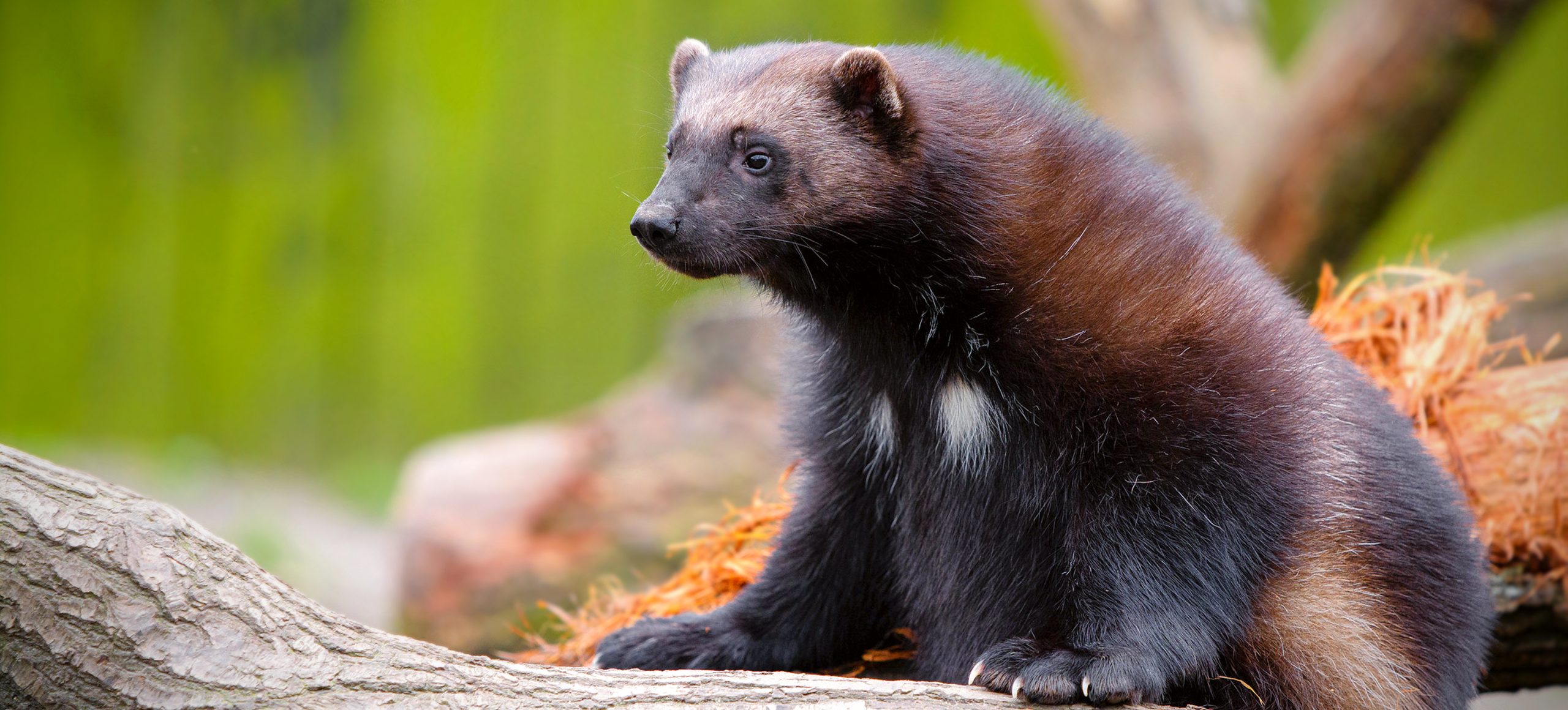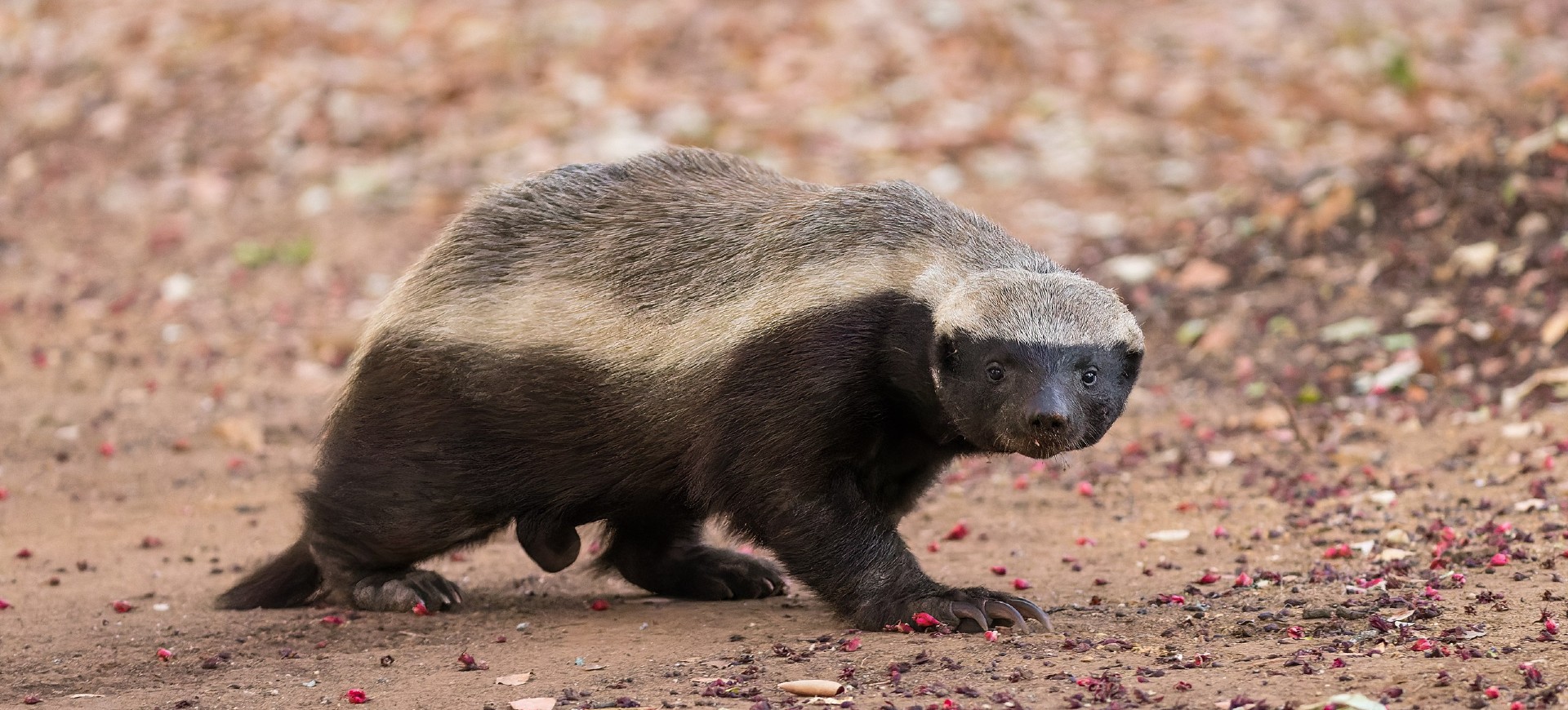Overview
The fisher (Pekania pennant) is a medium-sized Mustelidae mammal commonly found in North American forests. Known for its agility and predatory skills, the fisher preys on a variety of small mammals and birds and is one of the few predators of porcupines. Despite its name, the fisher rarely eats fish; instead, it prefers forested habitats where it can hunt effectively. Fishers are elusive and solitary animals with a keen sense of smell that aids them in locating prey.
Fishers are notable for their muscular build and long, bushy tails, contributing to their balance and agility in the trees. Their fur is dense and varies from dark brown to black, with a lighter, silvery appearance on the head and shoulders. Male fishers are typically larger than females, displaying sexual dimorphism in size and weight. This species is primarily nocturnal, resting most of the day in hollow trees or other secluded spots.
Fishers have adapted well to various forest types, including coniferous and deciduous forests, where they can find ample prey and shelter. They are also proficient climbers, often hunting squirrels and birds in the trees. Due to their role in controlling small mammal populations, fishers are important for maintaining forest ecosystem balance. Conservation efforts are ongoing to ensure their populations remain stable, particularly in areas where their habitat is threatened by deforestation.
Taxonomy
Kingdom
Phylum
Class
Order
Family
Genus
Species
Type
Current distribution:
Fishers are primarily distributed across North America, from the boreal forests of Canada to the northern United States. Their range extends from the Appalachian Mountains in the east to the Rocky Mountains and Pacific Coast in the west. They are most commonly found in the dense forests of the northeastern United States, including parts of New England and the Great Lakes region. Populations are also present in the western United States, particularly in the Sierra Nevada and Cascade Range.
In recent years, conservation efforts and habitat restoration have led to the reintroduction of fishers in several areas where they had previously declined. For instance, reintroduction programs have been successful in parts of the Pacific Northwest and the Appalachian region. Despite these efforts, fishers face ongoing challenges from habitat fragmentation and deforestation. Monitoring and protection of their habitats are crucial for ensuring their continued survival.
Physical Description:
Fishers are robust and agile, with long bodies and short legs that aid their adept climbing abilities. Their fur is dense and glossy, providing insulation against cold weather, and typically ranges from dark brown to black with some grizzled coloration. The head is broad with a pointed snout, and the ears are rounded and small. Fishers have sharp, retractable claws essential for climbing and capturing prey.
The tail of the angler is long and bushy, contributing significantly to its balance and agility in the trees. Males are generally larger than females, with males weighing between 8 to 13 lbs (3.6 to 5.9 kg) and females weighing between 4 to 6 lbs (1.8 to 2.7 kg). In terms of length, males can reach up to 47 inches (119 cm), including the tail, while females measure slightly shorter. This sexual dimorphism is typical of many Mustelidae species.

Lifespan: Wild: ~7 Years || Captivity: ~10 Years

Weight: Male: 8-13 lbs (3.6-5.9 kg) || Female: 4-6 lbs (1.8-2.7 kg)

Length: Male: 35-47 in (89-119 cm) || Female: 30-37 in (76-94 cm)

Height: Male: 16-20 in (41-51 cm) || Female: 12-16 in (30-41 cm)

Top Speed: 30 mph (48 km/h)
Characteristic:
Native Habitat:
Fishers prefer dense, mature forests with abundant canopy cover, which provides them with the necessary shelter and hunting grounds. They are commonly found in coniferous and deciduous forests, thriving in areas with many tree species. These habitats offer ample denning sites, such as hollow trees and logs, where anglers can rest and raise their young. A thick understory is also important, as it supports the small mammals and birds that constitute their prey.
In addition to forested regions, anglers can adapt to secondary-growth forests and are occasionally found in semi-urban areas where suitable habitat fragments remain. They are solitary and territorial, with each individual maintaining a home range that varies in size depending on the availability of resources. Fishers are skilled climbers, using the forest canopy to move through their territory and hunt. Their adaptability to different forest environments is key to their widespread distribution across North America.
Climate Zones:
Biomes:
Biogeographical Realms:
Continents:
Countries:
Diet:
Diet & Feeding Habits:
Fishers are opportunistic feeders with a diet that includes a wide range of small mammals, birds, fruits, and carrion. They are one of the few predators capable of hunting porcupines, using their agility and speed to avoid the quills and attack the less protected underbelly. Fishers also hunt snowshoe hares, squirrels, and various ground-dwelling birds. Their feeding habits help control populations of these species, thereby maintaining ecological balance in their habitats.
In addition to their primary diet, anglers consume nuts, berries, and other plant matter, particularly when animal prey is scarce. This flexibility in the diet allows them to survive in different environments and during varying seasons. Fishers hunt on the ground and in trees, showcasing their versatility as predators. They have keen senses of sight and smell, crucial for locating prey in dense forest environments.
Mating Behavior:
Mating Description:
Anglers have a polygynous mating system, where males may mate with multiple females during the breeding season. The breeding season occurs yearly, typically in late winter to early spring. After mating, females undergo a delayed implantation, where the fertilized egg does not immediately implant in the uterus, resulting in a total gestation period of about 11 months. This reproductive strategy ensures that the young are born in the optimal spring season with more abundant food.
The female angler typically gives birth to a litter of 1 to 4 kits born blind and helpless. The kits are weaned at around 8 to 10 weeks and become independent by the following fall. Male fishers do not participate in rearing the young, leaving all parental responsibilities to the female. The young anglers remain with their mother until they can hunt and survive independently.
Reproduction Season:
Birth Type:
Pregnancy Duration:
Female Name:
Male Name:
Baby Name:
Social Structure Description:
Fishers are solitary animals, each maintaining its territory except during the breeding season. Territories are marked by scent marking, and individuals are generally intolerant of others within their range. The size of an angler’s territory depends on the availability of food and habitat, with males typically having larger ranges than females. Social interactions are limited primarily to mating and the time females raise their young.
Young fishers disperse from their mother’s territory in the fall, seeking their home ranges. This dispersal helps maintain genetic diversity and reduces resource competition within a given area. While anglers are primarily nocturnal, they can occasionally be active during the day, especially in winter when daylight is shorter. Their elusive nature and solitary habits make them a challenging species to study in the wild.
Groups:
Conservation Status:
Population Trend:
Fishers are currently listed as Least Concern on the IUCN Red List, indicating stable populations. Conservation efforts and habitat management have contributed to stabilizing and recovering fisher populations in various regions. While their numbers are generally stable, anglers are still subject to threats from habitat destruction, particularly due to logging and urban development. Continuous monitoring and conservation efforts are essential to ensure their populations remain robust.
Anglers have a stable population trend, with significant populations in the northeastern, Great Lakes region, and western United States. Reintroduction programs have successfully increased their range in areas where they were previously extirpated. Despite these successes, some localized populations still face challenges related to human activities and habitat fragmentation. Maintaining large, contiguous forest habitats is crucial for the long-term survival of fisher populations.
Population Threats:
Habitat loss and fragmentation due to logging and urban development are the primary threats to fisher populations. The destruction of mature forests reduces the availability of suitable denning and hunting sites, impacting their ability to survive and reproduce. Additionally, anglers can become victims of road mortality as they travel across fragmented landscapes. Although regulated, trapping and hunting can also threaten local populations if not managed properly.
Climate change may also affect fisher habitats by altering the distribution and health of forest ecosystems. Changes in prey availability due to shifts in climate patterns could impact fisher populations. Pesticides and rodenticides used in forest management and agriculture can indirectly harm fishers by contaminating their food sources. Conservation strategies must address these multifaceted threats to ensure the continued stability of fisher populations.
Conservation Efforts:
Various conservation efforts are in place to protect fisher populations and their habitats. Reintroduction programs have been implemented in areas where fishers were previously extirpated, successfully re-establishing populations in parts of the United States. Habitat protection and restoration are critical components of these efforts, focusing on preserving large, contiguous forest areas. Legal protections and regulated trapping seasons also help manage and conserve fisher populations.
Research and monitoring programs are essential for understanding fisher ecology and population dynamics. These programs provide data that inform management practices and conservation strategies. Public education and awareness campaigns are also important, helping to foster community support for fisher conservation. Collaborative efforts between government agencies, conservation organizations, and local communities are vital for the long-term success of these initiatives.
Additional Resources:
Fun Facts
- Fishers are one of the few predators that regularly hunt porcupines.
- Despite their name, fishers do not frequently eat fish.
- Fishers have retractable claws similar to those of cats.
- They are excellent climbers and can descend trees head-first.
- Anglers have a high-pitched scream that can be heard during mating season.
- The angler’s scientific name, Pekania pennanti, honors the British naturalist Thomas Pennant.
- Delayed implantation allows fishers to time the birth of their young with optimal environmental conditions.
- Fishers can live in both coniferous and deciduous forests.
- They play an important role in controlling small mammal populations.
- Anglers are known for their agility and speed, capable of running at 30 mph.


